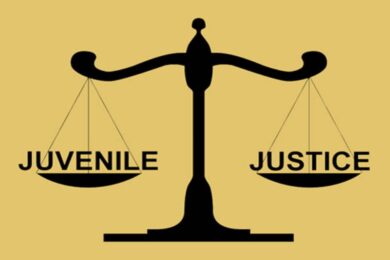
Introduction
The judicial system in India plays a pivotal role in upholding the Constitution, interpreting laws, and delivering justice. As one of the three pillars of Indian democracy, alongside the legislature and the executive, the judiciary is tasked with maintaining the rule of law and ensuring the protection of citizens’ fundamental rights. India’s judicial system, inspired by the British legal model, is independent, impartial, and hierarchical in structure.
Over the years, the Indian judiciary has evolved to become one of the most powerful in the world, with the authority to strike down unconstitutional laws and check the abuse of power by other branches of government. This blog explores the structure, powers, and functioning of the judicial system in India.
1. Structure of the Indian Judiciary
The Indian judiciary follows a unitary and integrated three-tier structure, which includes:
a. Supreme Court of India
Established: January 28, 1950
Location: New Delhi
Composition: Chief Justice of India (CJI) and up to 33 other judges.
Jurisdiction:
Original (e.g., disputes between states or between states and the Centre)
Appellate (appeals against High Court judgments)
Advisory (under Article 143, President may seek advice)
b. High Courts
Each state (or group of states/UTs) has a High Court.
There are 25 High Courts in India as of 2025.
They have:
Original jurisdiction (in civil and criminal cases in some cities like Mumbai, Chennai, and Kolkata)
Appellate jurisdiction
Writ jurisdiction under Article 226 of the Constitution
c. Subordinate Courts (District and Lower Courts)
Operate at the district level
Include District Courts, Civil Judges, Magistrate Courts, Sessions Courts, Family Courts, etc.
They deal with civil, criminal, and administrative matters as per state jurisdiction.
2. Powers and Functions of the Judiciary
a. Interpretation of the Constitution
The judiciary has the power to interpret the Constitution and ensure that its provisions are followed. This is vital in resolving constitutional disputes and maintaining the supremacy of the Constitution.
b. Judicial Review
Under Articles 13, 32, and 226, the judiciary can examine the constitutionality of laws passed by Parliament or state legislatures. If a law violates the Constitution, especially the Fundamental Rights, it can be declared null and void.
c. Protection of Fundamental Rights
Article 32 (Supreme Court) and Article 226 (High Courts) empower citizens to move the courts directly in case of violation of fundamental rights.
Courts can issue writs like Habeas Corpus, Mandamus, Certiorari, Prohibition, and Quo Warranto.
d. Dispute Resolution
Resolves disputes between individuals, organizations, states, and the Union Government.
The judiciary ensures that justice is delivered fairly and without bias.
e. Advisory Role
The President can seek the Supreme Court’s opinion on constitutional or legal matters.
Though not binding, these opinions hold persuasive value.
3. Independence of the Judiciary
The Constitution ensures that the judiciary remains free from executive or legislative interference. Features that uphold its independence include:
Security of tenure: Judges cannot be removed except by impeachment.
Fixed service conditions: Salaries and allowances are charged on the Consolidated Fund of India.
Separation of powers: Judiciary is not answerable to the legislature or executive.
Contempt of court powers: To ensure its orders are followed.
4. Important Judicial Doctrines
Several doctrines and principles guide judicial interpretation:
a. Basic Structure Doctrine
Propounded in Kesavananda Bharati v. State of Kerala (1973)
Parliament can amend the Constitution but cannot alter its basic structure.
b. Doctrine of Separation of Powers
Although not strictly enforced, this principle guides the functional demarcation between the three branches.
c. Doctrine of Stare Decisis
Ensures consistency in law through precedents.
5. Role in Social Justice and Activism
a. Public Interest Litigation (PIL)
Introduced in the 1980s to allow any person to file a case for the protection of public interest.
Landmark in democratizing access to justice.
b. Judicial Activism
Instances where the judiciary steps in to address executive or legislative inaction.
Notable cases:
Vishaka v. State of Rajasthan (guidelines for sexual harassment at workplace)
MC Mehta cases (environmental protection)
6. Challenges Facing the Indian Judiciary
a. Case Pendency
Over 5 crore cases are pending across Indian courts.
Reasons: Shortage of judges, procedural delays, frivolous litigation.
b. Judicial Vacancies
Many courts operate below sanctioned strength, especially High Courts.
c. Lack of Infrastructure
Many courts lack basic amenities, digitization, or proper support staff.
d. Allegations of Corruption
A few instances have raised concerns about the integrity of certain judges.
e. Delay in Judicial Appointments
The Collegium system faces criticism for lack of transparency in appointments.
7. Recent Reforms and Developments
a. E-Courts Project
Aimed at digitizing courts, filing systems, and case status tracking.
b. National Judicial Appointments Commission (NJAC)
Proposed to replace the collegium system but struck down as unconstitutional.
c. Virtual Hearings
COVID-19 led to the adoption of video conferencing, a practice still continuing.
d. Lok Adalats and Fast Track Courts
These mechanisms aim to speed up disposal of cases and reduce backlog.
Conclusion
The Indian judicial system is a critical guardian of democracy and the Constitution. While it has been instrumental in shaping India’s social and political landscape, several systemic challenges continue to hinder its efficiency. With ongoing reforms, digitization, and greater emphasis on transparency and speed, the judiciary is moving toward a more accessible and effective system of justice. Ensuring timely justice, upholding constitutional values, and maintaining judicial integrity will remain key to its continued relevance in the world’s largest democracy.








No Comments